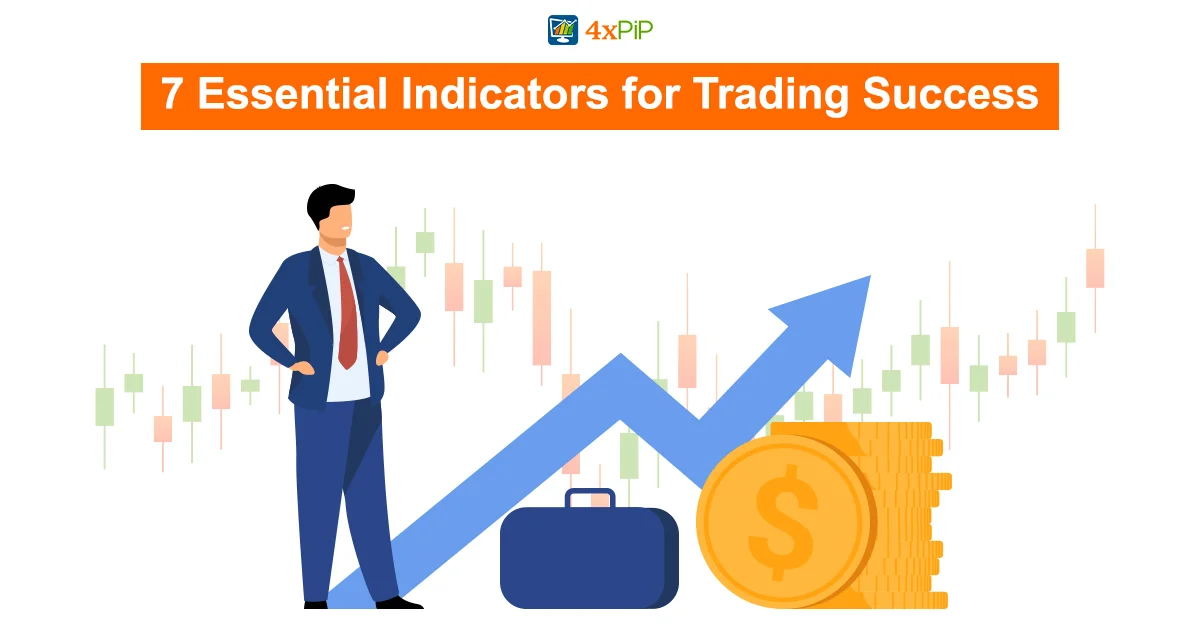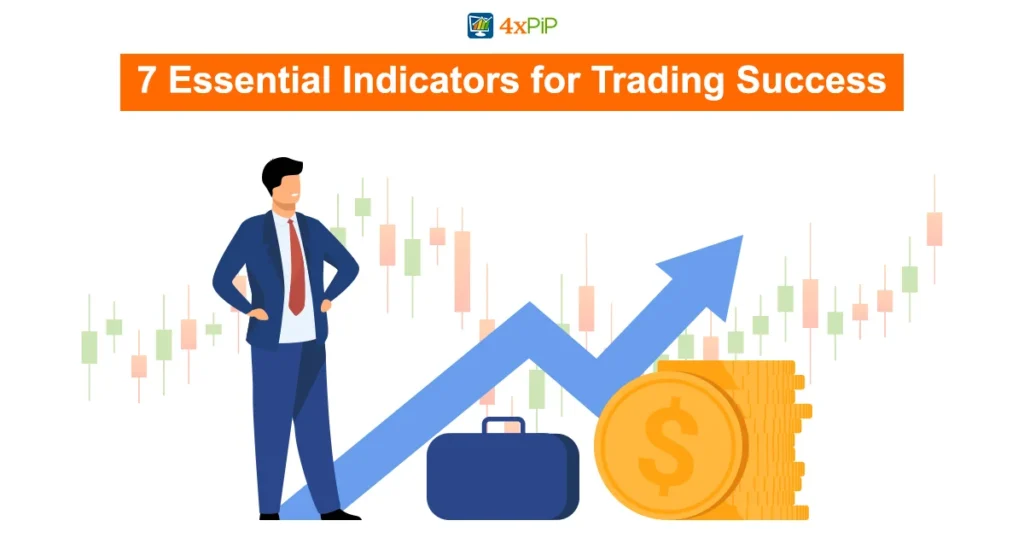If you’re getting into day trading in things like cryptocurrency, forex, or stocks, it’s important to know how to use technical indicators to make smart choices. These indicators help you understand the supply and demand and what people are thinking in the market. In this guide, we’ll talk about seven important indicators for successful day trading. If you want to learn more, you can email the experts at 4xPip at [email protected].
-
On-Balance Volume (OBV):

On-Balance Volume (OBV) is an important tool that shows if more people are buying or selling a stock over time. It looks at the volume (number of shares traded) on days when prices go up (good days) and days when prices go down (bad days). If OBV is going up, it means more people are buying, supporting the upward trend. If OBV is going down, it suggests prices might fall. Traders also use OBV to spot signs of a weakening trend early on.
OBV helps confirm if a trend is continuing. When both prices and OBV are going up, it strengthens the signal of an ongoing trend. It’s also useful for telling if a stock is overbought (too expensive) or oversold (too cheap), and it gives signals for when to buy or sell.
-
Accumulation/Distribution Line (A/D):
The Accumulation/Distribution (A/D) Line is a key indicator that shows how money moves in and out of a stock. It looks at the trading range and where the closing price falls within that range over a certain time. When the A/D line goes up, it means more people are buying, confirming an uptrend. If it goes down, it suggests a downtrend. Like OBV, traders use the A/D line to spot divergence and predict possible trend changes.
Traders like the A/D line because it goes beyond just looking at volume. It considers the trading range and closing price, giving a good sense of market sentiment. Also, it’s handy for spotting potential trend reversals, making it useful for traders who want a thorough understanding of the market.
-
Average Directional Index (ADX):
The Average Directional Index (ADX) helps show if a trend in the market is strong or weak. If ADX is above 40, it means there’s a strong trend, either going up or down. If it’s below 20, it suggests a weak or sideways market.
ADX works with two other indicators, DI+ and DI-, to give a complete picture of the trend. Traders find ADX useful because it gives a clear number for how strong the trend is. Considering DI+ and DI- along with ADX helps understand the overall trend better. Traders use ADX to figure out strong trends in different market situations.
-
Aroon Indicator:
The Aroon Indicator helps traders figure out if a stock is on an up or down trend and if it’s reaching new highs or lows. It uses two lines – Aroon Up and Aroon Down. When they cross, it suggests a possible change in trend. A high Aroon Up (near 100) and low Aroon Down (near zero) confirm an upward trend. On the other hand, if Aroon Down crosses above Aroon Up, with Aroon Down near 100, it indicates a downward trend.
Traders like the Aroon Indicator because it specifically focuses on identifying trends and possible changes. By measuring the time since a stock had its highest or lowest closing price, it helps assess the strength and duration of a trend. This makes it a crucial tool for traders looking for clarity in trend analysis.
-
Moving Average Convergence Divergence (MACD):
MACD, which stands for Moving Average Convergence Divergence, helps traders figure out if a trend is going up or down and how strong it is. It’s made up of two lines, MACD and a slower one called the signal line. When these lines cross, it gives a signal to trade. If MACD is above zero, it means the trend is going up, and if it’s below zero, it’s a bearish period. Looking at where MACD is with zero helps decide whether to buy or sell.
Traders like using MACD because it does two things: tells you the trend direction and how strong it is. It’s good at noticing both short-term and long-term market changes, making it useful in different situations. Traders often rely on MACD to confirm if a trend is changing or to spot opportunities in a fast-changing market.
-
Relative Strength Index (RSI):
The Relative Strength Index (RSI) helps traders figure out if a stock is overbought or oversold by comparing recent gains and losses. RSI levels go from 0 to 100. If it’s above 70, it’s probably overbought and might go down. If it’s below 30, it’s likely oversold, and there could be a potential rise.
Traders also use RSI to spot weakening trends through divergence. RSI is crucial in technical analysis because it’s simple and effective in finding possible turning points. Whether you’re using it to see if a stock is overbought/oversold or for divergence analysis, RSI is a useful tool for traders looking for practical insights.
-
Stochastic Oscillator:
The Stochastic Oscillator is a tool that helps traders figure out if a stock is overbought or oversold. It gives a number between 0 and 100, where above 80 means it’s likely overbought, and below 20 means it might be oversold. Traders look at the overall trend and use these numbers to decide when to buy or sell. The Stochastic Oscillator is useful because it quickly reacts to price changes, giving timely signals for overbought and oversold conditions. Traders like it because it’s versatile and helps them make better decisions.
Zigzag Indicator:
When you’re trading, check out the Zigzag Indicator for MT4 and Zigzag Indicator for MT5 at 4xPip. It’s a helpful tool for spotting market trends accurately. This indicator can assist you in finding good times to enter or exit trades. Adding the Zigzag Indicator to your analysis tools can improve your trading strategies and make it easier to identify trends.
Zigzag Indicator for MT4:
Zigzag Indicator for MT5:
Summary:
To be successful at day trading, you need to understand key indicators. This guide focuses on seven important ones for trading in cryptocurrency, forex, or stocks. These indicators help you analyze the market. For example, the On-Balance-Volume (OBV) shows if people are buying or selling, and the Stochastic Oscillator helps identify if a stock is overbought or oversold. To learn more about using these tools, you can get advice from experts at 4xPip by emailing [email protected]. Also, the Zigzag Indicator for MT4 and Zigzag Indicator for MT5 are useful for spotting trends accurately, providing valuable insights for making better decisions.











